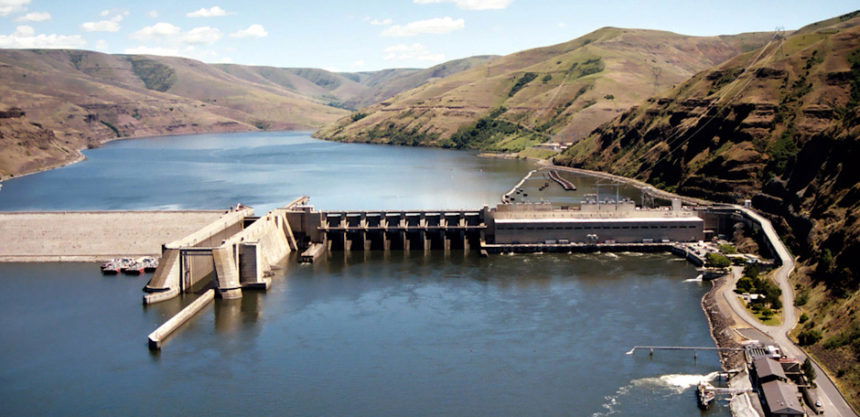Feds reject removal of 4 Snake River dams in key report

PORTLAND, Ore. (AP) — A long-awaited federal report out Friday rejected the idea of removing four hydroelectric dams on a major Pacific Northwest river in a last-ditch effort to save more than a dozen species of threatened or endangered salmon, saying such a dramatic approach would destabilize the power grid, increase overall greenhouse emissions and more than double the risk of regional power outages.
The four dams on the lower Snake River in eastern Washington are part of a vast and complex hydroelectric power system operated by the federal government in Washington, Oregon, Idaho and Montana.
Environmental groups who have pushed for years for the dams to come down immediately blasted the report. The three agencies in charge of overseeing the sprawling hydropower system recommended an alternative that includes a variety of strategies, including fine-tuning the amount of water that spills over the dams for fish.
“Rather than seizing this opportunity to heed the public’s call for working together for a solution that revives salmon populations, the draft plan is built on the same failed approach the courts have rejected time and again,” said Todd True, an attorney for Earthjustice who has represented environmentalists and fishing groups in ongoing litigation over the dams.
“We need a different approach and leadership from elected officials.”
Oregon Gov. Kate Brown has voiced support for demolishing the Snake River dams.
The 14 federal dams on the Columbia and Snake rivers together produce 40% of the region’s power — enough electricity to power nearly 5 million homes, or eight cities roughly the size of Seattle. They also contain a system of locks that allows cities nearly 500 miles (800 kilometers) inland from the Pacific Ocean access to Asian markets via barges that float down the massive rivers to the sea. Roughly 50 million to 60 million tons of cargo navigate the Snake and Columbia river system each year.
Yet the towering dams have proven disastrous for salmon that struggle to navigate past them on human-made fish ladders as they swim upstream to spawn and die after spending most of their lives in the Pacific. Salmon are unique in that they hatch in freshwater streams and then make their way hundreds of miles to the ocean, where they spend years before finding their way back to their natal streams to mate, lay eggs and die.
Snake River sockeye were the first species in the Columbia River Basin listed under the Endangered Species Act in 1991. Now, 13 salmon runs are listed as federally endangered or threatened.
The Columbia River System dams cut off more than half of salmon spawning and rearing habitat, and many wild salmon runs in the region have 2% or less of their historic populations, said Meg Townsend, an attorney for the Center for Biological Diversity.
“The science shows that pulling out the four lower Snake River dams is the only way to save Columbia river salmon,” she said.
Townsend and other scientists also warn that southern resident orcas are starving to death because of a dearth of the chinook salmon that are their primary food source.
The Puget Sound population of orcas — also called killer whales — was placed on the endangered species list in 2005. A mother orca that carried her dead baby on her back for 17 days brought international attention in 2018 as their numbers have dwindled to 72 animals.
The U.S. government has spent between $15 billion and $17 billion on improved salmon passage over years, but nothing has changed for the salmon, True said. Yet the Pacific Northwest’s power supply and ability to use energy more efficiently have vastly improved in the past 20 years, he said.
Opponents of dam removal say they want salmon to flourish, but they aren’t sure breaching four major hydroelectric dams will help — and it could instead damage the regional economy and the stability of the power supply.
Read more at: https://apnews.com/e1a60df0a37f29ce8a86fa18ff8513f5